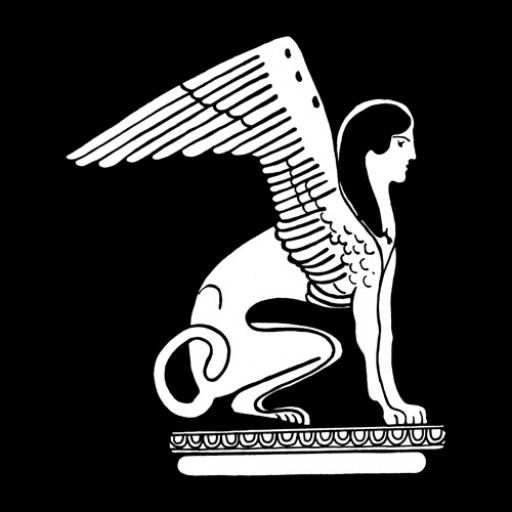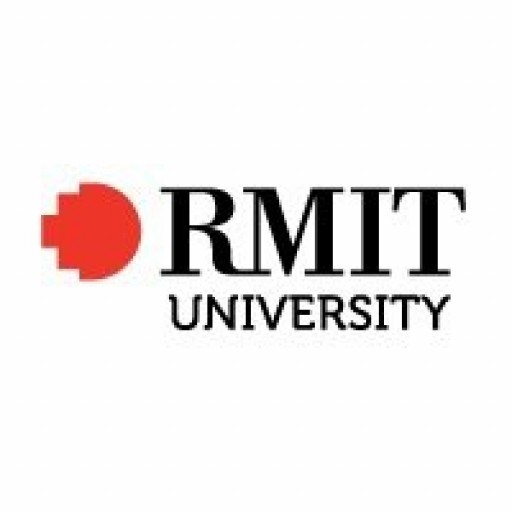Photos of university / #dundeeuni
Description
Why study Interior & Environmental Design at Dundee?
Do you have a fascination for space, colour and design? Then Interior & Environmental Design at Duncan of Jordanstone College of Art and Design is the programme for you. The programme covers a wide range of contexts from interiors, architecture, exhibitions, installation, furniture and digital realms. We will encourage you to develop your understanding of the use of space, environmental awareness, design thinking, presentation and communication skills.
Our students work in a dynamic open studio environment, supported by a teaching team which has considerable expertise in architecture, interiors, fine art, sustainability, workshops and computer-aided design.
We are a member of the Group for International Design Education (GIDE) where students work on shared themes with design partners in Italy, Germany, Slovenia, Belgium, England, Netherlands and Switzerland.
At the end of the course you will be able to:- Confidently use colour, light, texture, and space with sensitivity
- Seek employment in the creative industries and in other sectors
- Apply for a Masters programme in the UK or abroad
- Promote yourself, your skills and your work to the public
Final year Interior & Environmental Design students are given the opportunity to showcase their work at FREERANGE in London alongside thousands of other design graduates. FREERANGE showcases the best new Fashion, Art, Design, Photography, Motion Arts, Interiors and Architecture.
FREERANGE helps to launch the careers of design graduates and attracts considerable visitor numbers throughout the duration of the exhibition. It's a great opportunity for students to be discovered.
Interior & Environmental Design graduate Sean Cassidy was awarded the prestigious Blueprint Most Innovative Design Project at the 2012 FREERANGE Exhibition.
Student exchangeThe academic perspective is enhanced by opportunities for you to study abroad through exchange schemes that operate with centres of excellence in many European and transatlantic countries.
In addition, the department normally organises an overseas study visit for all Level 3 students.
Nora Chou, current student, says: "We are constantly challenged to assert our creativity in different forms, whether it be the manual construction of furniture and lighting design, or designing for a hypothetical client, hence maximizing our skill development. Studying Interior and Environmental Design has without a doubt been a constant and incredible learning experience".
You can also read.
With the wide range of skills that you will develop on the design programmes, you will be prepared not only to practice as a designer in your chosen field but also to meet the challenges of a variety of different career paths. Recent graduates have been employed in a wide variety of fields of work and postgraduate activity including:
- Interior and architectural design
- TV and film set design
- Furniture design
- Lighting design
- Theatre set design
- Exhibition
- Installations
- Sound-scapes
- Arts management
- Computer Aided Design
- games industry
- Animation
- Business
- Teaching
We support students in this initial step by providing the opportunity to exhibit their work annually at events in London. Each year level 4 Interior & Environmental Design students are given the opportunity to exhibit at FREERANGE London, a graduate summer show that provides a platform for graduates to showcase their creative talents at the centre of London's creative scene.
Postgraduate studySome graduates choose to continue their studies at postgraduate level on our taught Masters degree or PhD programmes.
Enterprise/FreelanceOthers have gone on to freelance and establishing their own successful businesses. Extra curriculum activities such as the Enterprise Gym help students cultivate entrepreneurial skills. The Greenhouse Business Pre-Incubator facility provides ambitious students with an office space to explore their business idea.
Louise Forbes & Susan Younger graduated in 2009. On the back of their joint final year project they formed TWIG(Two witty intelligent girls). They design and make bespoke furniture and lighting. In 2010 the two graduates secured funding to help improve their manufacturing process.
Chris Twaddle graduated in 1993. He is director of Kennedy Twaddle Architectural Design in London. He has worked in Rome, Glasgow and London.
UCAS Code: W250
The Interior and Environmental Design program at the University of Dundee offers a comprehensive and innovative curriculum, preparing students to become creative and skilled professionals in the fields of interior design and environmental aesthetics. This program is designed to develop students’ abilities to conceptualize and deliver innovative interior spaces that enhance human experience and promote sustainability. Throughout the course, students explore a wide range of topics including spatial planning, materiality, lighting design, sustainable practices, and contemporary design theories. The program combines practical studio-based learning with critical thinking and technical knowledge, allowing students to develop their own unique design identities.
Students will undertake a variety of projects, from residential and commercial interiors to public spaces, integrating both aesthetic appeal and functional efficiency. The curriculum emphasizes the importance of sustainable interior environments, encouraging students to consider environmental impact and responsible resource use in their designs. With access to state-of-the-art facilities and workshops, students have opportunities to experiment with different materials, textures, and digital design tools. The program fosters an international perspective by exposing students to global design trends and cultural considerations, preparing them for careers worldwide.
In addition to core design modules, the program offers training in project management, visual communication, and interdisciplinary collaboration. Students engage with real-world industry partners through live projects and internships, enhancing their practical experience and employability. The academic team is composed of experienced designers and researchers who provide mentorship and support throughout the course. Graduates of the program are well-equipped to pursue careers in interior design consultancies, environmental design agencies, exhibition design, and freelance consultancy, among others. They are also prepared to continue their studies in postgraduate programs or to undertake research in sustainable and innovative design solutions. Overall, the Interior and Environmental Design program at the University of Dundee combines creative exploration with technical excellence to prepare students for a dynamic and impactful career in interior and environmental design.
Program requirements for the BA (Hons) Interior and Environmental Design at the University of Dundee include a strong foundation in design principles, technical skills, and contextual understanding. Applicants typically need to demonstrate a creative portfolio that showcases their interest and aptitude in design, along with relevant academic qualifications such as Highers or equivalent, with a strong performance in art, design, or related subjects. A personal statement outlining motivation, interest in interior and environmental design, and career aspirations is also required. For international students, evidence of English language proficiency such as IELTS or equivalent is necessary, with a typical minimum score of 6.0 overall. The program values a diverse student body, encouraging applicants from various backgrounds with a keen interest in sustainable and innovative design solutions. Selection may involve an interview or portfolio review to assess creative skills and potential. Once enrolled, students are expected to engage actively in studio projects, critiques, and coursework that develop design thinking, technical drawing, computer-aided design (CAD), model-making, and understanding of environmental systems. The curriculum emphasizes sustainability, user-centered design, and interdisciplinary collaboration, preparing graduates for careers in interior, environmental, and spatial design sectors. Students are also encouraged to participate in industry placements, live projects, and research activities. The program is designed to be accessible to students with different levels of prior experience, providing foundational modules for beginners and advanced topics for those with previous knowledge. Overall, the program aims to develop competent, innovative, and socially responsible designers who can contribute effectively to the built environment.
The University of Dundee offers various financing options for students pursuing its Interior and Environmental Design programs. Tuition fees vary depending on the student's residency status, with Scottish and UK students benefiting from the UK government’s funding schemes, while international students are required to pay higher fees. For undergraduate programs, home students can often access Student Awards Agency for Scotland (SAAS) funding, which may include tuition fee loans, grants, and bursaries, subject to eligibility. These financial support options aim to reduce the economic burden on students and facilitate access to quality education in interior and environmental design fields.
For postgraduate students, funding opportunities include taught postgraduate scholarships, departmental awards, and external funding bodies such as research councils or industry partnerships. The university also encourages students to explore external scholarships and sponsorships from private foundations or organizations related to architecture, design, or environmental sustainability. Additionally, Dundee offers various part-time work opportunities on campus, enabling students to earn income while studying and managing living expenses effectively.
Living costs are kept reasonable compared to larger UK cities, with estimates for accommodation, food, transportation, and personal expenses. Students are advised to budget accordingly and consider available financial aid when planning their studies. The university provides comprehensive guidance through its student finance office, ensuring prospective and current students are well-informed about eligibility, application processes, and deadlines for all funding schemes. Overall, the University of Dundee strives to support its students financially by offering a blend of government funding options, scholarships, and on-campus employment, making interior and environmental design education accessible and affordable.
Interior and Environmental Design at the University of Dundee is a comprehensive program that integrates creative design principles with practical applications to prepare students for diverse careers within the interior and environmental design sectors. The course is designed to develop students' skills in conceptual thinking, technical knowledge, and problem-solving, enabling them to craft innovative, functional, and sustainable interior environments. Throughout the program, students engage with a wide range of topics including spatial planning, interior architecture, lighting design, material selection, and sustainable design strategies. The course emphasizes both theoretical understanding and hands-on experience, often incorporating studio-based projects, workshops, and industry placements to foster real-world skills.
The curriculum is structured to build from foundational design principles in the early stages to more complex and specialized topics in later years. Students are encouraged to explore contemporary issues facing the design industry, such as environmental concerns, digital technologies, and cultural considerations. The program also emphasizes the importance of understanding client needs and working within budgetary and regulatory constraints, thus preparing graduates for professional practice.
Facilities at the university include dedicated design studios, computer labs with industry-standard software, and model-making workshops. Students may have opportunities to participate in exhibitions, competitions, and collaborative projects with industry partners, which enhance their professional portfolio and networking prospects. The program aims to produce graduates who are not only skilled designers but also environmentally responsible and culturally aware citizens.
Graduates from the Interior and Environmental Design program can pursue careers in interior architecture, spatial design, environmental consultancy, exhibition design, and historic preservation, among others. They are equipped with the creative, technical, and professional skills necessary to succeed in a competitive industry. The university's strong links with local and international design firms also facilitate employment opportunities and internships for students during and after their studies.
Overall, the program offers a dynamic learning environment that encourages innovation and sustainability in interior and environmental design practices, aligning with global trends and local needs. Graduates leave equipped to make meaningful contributions to the development of inclusive, efficient, and aesthetically compelling interior spaces in various sectors including residential, commercial, and public environments.






